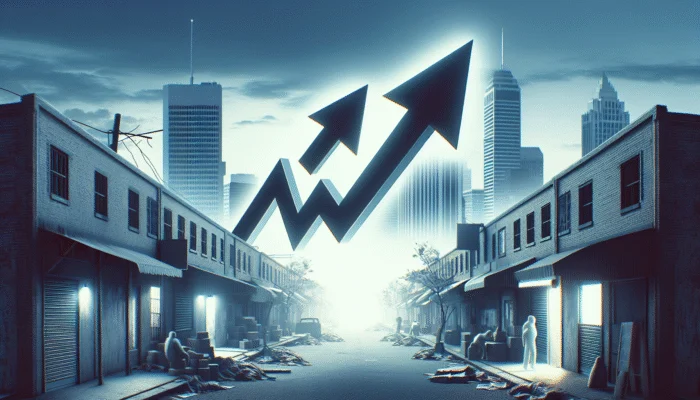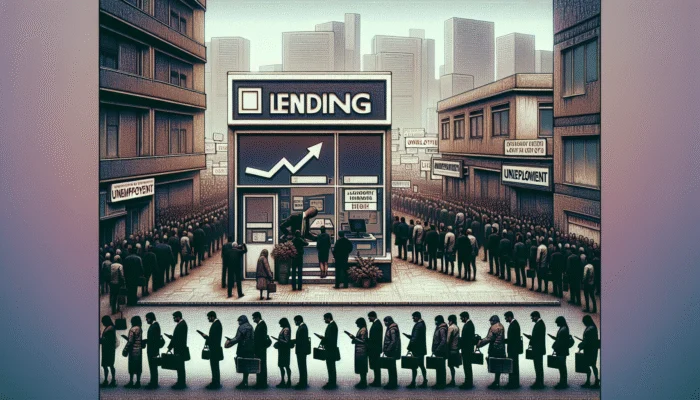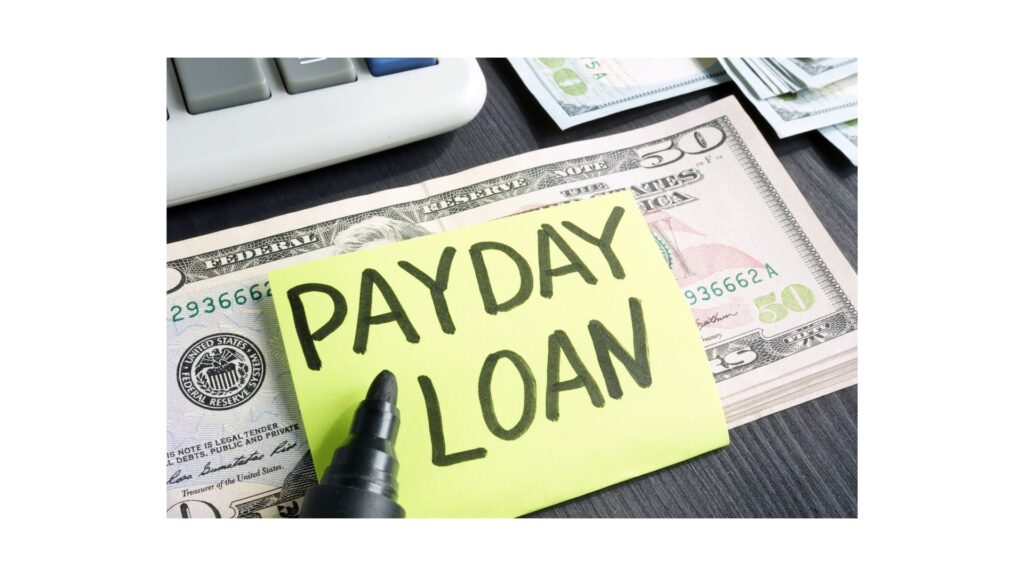Understanding the Impact of Rising Interest Rates on Payday Loan Expenses
As interest rates continue to rise, the effects resonate throughout various segments of the economy, particularly affecting the realm of payday loans. For borrowers who are often already navigating challenging financial landscapes, the reality is stark: the cost of borrowing is on an upward trajectory. This increase in rates affects not only long-term financing solutions but also extends to short-term options like payday loans, prompting consumers to reevaluate their borrowing choices and the associated financial implications.
Assessing the Impact of Rising Interest Rates on Borrowers

The most immediate consequence of escalating interest rates is a marked increase in the costs associated with payday loans. For many individuals seeking prompt relief from financial burdens, these loans are typically seen as a last resort. Unfortunately, as interest rates climb, so do the fees linked to these loans, intensifying the challenges faced by borrowers who rely on them. Those who may have previously qualified for more favorable terms now encounter heightened fees, making timely repayment increasingly difficult. This spiraling cycle of debt can create overwhelming financial stress, often forcing borrowers to seek additional loans merely to cover the initial costs, which perpetuates their financial struggles.
Moreover, the rising interest rates necessitate that borrowers become more discerning and vigilant regarding their financial choices. The once straightforward access to funds starts to come with a hefty price tag, leading to severe consequences for those who default on their payday loans. This reality compels many individuals to reassess their options, carefully weighing the comprehensive costs of borrowing against their immediate financial requirements. The emotional burden of financial uncertainty is compounded as individuals confront rising costs, enhancing their sense of instability and the looming threat of escalating debts.
How Lenders Adjust to Rising Interest Rates
In an environment marked by climbing interest rates, payday lenders are far from passive participants. To sustain profitability, they frequently modify their fee structures in response to market conditions. This proactive adjustment means that lenders may increase the fees they charge, further amplifying the challenges borrowers face. While this strategy aims to create a buffer against potential losses arising from higher capital costs, it often translates into increased financial burdens for those seeking relief.
As lenders refine their strategies, consumers must navigate a progressively intricate landscape of payday lending. The variability in fee adjustments across different lenders can create notable disparities in costs, leaving borrowers needing to exercise greater discernment when comparing rates and terms from various providers. This heightened variability contributes to confusion and uncertainty among consumers, who may feel overwhelmed by the multitude of choices at their disposal. As a result, the rising interest rates emerge as a critical factor influencing the structuring and pricing of payday loans, ultimately shaping the financial health of borrowers.
The Role of Regulatory Oversight in Payday Lending
With the increase in interest rates comes a surge of scrutiny from regulatory bodies. As the costs associated with payday loans rise, regulators may feel compelled to intervene, closely examining fee structures and lending practices. Such scrutiny often triggers discussions about the fairness and transparency of payday lending, especially amid growing public concern regarding predatory lending practices. The potential for new regulations adds layers of complexity to an already challenging landscape for payday lenders.
Regulatory agencies may propose new limitations on the fees lenders can impose, aiming to shield vulnerable borrowers from the predatory tactics that can arise in an environment of increasing rates. These anticipated changes can lead to a more stable lending environment, but they may simultaneously introduce uncertainty for lenders who must adapt to the evolving regulatory framework. Borrowers, too, may find themselves affected by these shifts, as changes in regulations can directly impact their access to funds and the expenses associated with borrowing.
Broader Economic Implications of Rising Interest Rates

The wider economic implications of rising interest rates are significant and cannot be overlooked. As the costs of borrowing escalate, numerous consumers may opt to forgo payday loans altogether, resulting in a noticeable decrease in demand for these financial products. Such behavioral shifts can create ripple effects throughout the economy, affecting various sectors and potentially leading to a slowdown in economic activity. This impact is particularly pronounced in communities where payday loans have traditionally served as a vital lifeline for individuals facing financial hardships.
As consumers adjust their borrowing behaviors in light of rising costs, the overall demand for financial products may contract. This trend can tighten credit markets, prompting lenders to become more cautious about extending credit. For borrowers, this fosters an environment of increased scrutiny, where obtaining loan approvals becomes more challenging. The intricate interplay between rising interest rates, borrower behaviors, and lender responses underscores the interconnected nature of the financial ecosystem and highlights the importance of comprehending the implications of economic trends on personal finance.
The Connection Between Unemployment Rates and Payday Loan Demand
The relationship between unemployment rates and the demand for payday loans serves as a crucial indicator of economic health. As joblessness rises, individuals often find themselves in precarious financial positions where immediate financial support becomes essential. The increase in unemployment sets off a chain reaction, heightening the demand for payday loans as individuals seek to cover fundamental expenses, ranging from rent to medical bills.
Understanding the Correlation Between Unemployment and Loan Usage
Elevated unemployment rates are closely correlated with a surge in demand for payday loans. When individuals lose their jobs, they frequently struggle to meet their financial obligations, prompting many to seek short-term financing solutions. This trend is particularly pronounced in regions undergoing economic downturns, where the rate of job losses may spike dramatically. Consequently, payday lenders often experience a rapid increase in applications, reflecting the urgent need for financial assistance among the unemployed population.
This heightened demand creates a unique dynamic within the payday lending market. Many borrowers find themselves in critical need of quick cash, leading to decisions that may not align with their long-term financial health. As consumers rush to secure loans to address immediate expenses, they may overlook the associated fees and repayment terms. This hasty decision-making can lead to a cycle of borrowing that proves difficult to escape, ultimately resulting in increased financial strain for individuals already grappling with significant challenges.
Fee Implications in Times of Increased Loan Demand

With the surge in demand for payday loans during periods of elevated unemployment, lenders may seize the opportunity to raise their fees. As the market becomes increasingly competitive, some lenders may initially offer attractive rates to entice borrowers, only to impose substantial fees and charges later on. This practice can foster a misleading perception of affordability, causing many borrowers to underestimate the true costs associated with borrowing.
The ramifications of such fee structures can be severe, especially for individuals already facing financial difficulties. The heightened fees associated with payday loans during periods of increased unemployment can create an even heavier burden on borrowers, complicating their ability to repay loans on schedule. As reliance on these loans grows, lenders may view this as an opportunity to enhance their profitability, often at the expense of their customers’ financial stability.
The Effects of Economic Recovery on Payday Loan Demand
As unemployment rates begin to decline and the economy shows signs of recovery, the demand for payday loans often decreases. This reduction in demand can instigate significant shifts within the payday lending landscape. With fewer individuals seeking these loans, lenders may find themselves compelled to adjust their fee structures in response to the changing market dynamics. A decrease in demand frequently leads to increased competition among lenders, as many strive to attract borrowers with more favorable terms.
The interconnectedness of economic recovery and payday loan demand highlights the cyclical nature of the financial landscape. As job opportunities become more plentiful and financial stability returns to communities, reliance on high-interest payday loans typically diminishes. For lenders, this shift necessitates a reexamination of their pricing strategies, as the competitive landscape evolves and expands.
The resulting changes can present advantages for consumers, as diminished demand may encourage lenders to provide more favorable terms and lower fees. However, the transition from a high-demand environment to a more stable lending atmosphere can take time, leaving some borrowers in a precarious situation as they navigate their financial circumstances. Understanding these dynamics is crucial for both borrowers and lenders as they adapt to the shifting economic landscape.
Inflation’s Influence on Consumer Borrowing Power
Inflation represents a powerful economic force capable of significantly affecting the borrowing power of consumers. As prices continue to rise, individuals find their purchasing power diminishing, which often leads them to seek alternative financing options such as payday loans. This shift in financial behavior carries extensive consequences, especially in the domain of short-term lending.
The Impact of Decreased Purchasing Power on Borrowing Needs
As inflation diminishes purchasing power, many consumers discover themselves in need of additional financial assistance. The escalating costs of essential goods and services mean individuals have less disposable income available to cover unexpected expenses. For numerous individuals, this reality propels them to consider payday loans as a viable option for immediate financial relief. Unfortunately, this increased reliance on payday loans can create a cycle of debt that proves challenging to break.
Inflation tends to disproportionately impact lower-income individuals, who frequently allocate a more significant portion of their income to basic necessities. As these costs continue to rise, the necessity for immediate cash becomes increasingly pronounced. Consequently, payday loans emerge as a primary solution for those grappling with the financial implications of inflation, further entrenching these loans within the financial landscape.
Fee Adjustments in Response to Inflation
In light of inflation, payday lenders may adapt their fees to account for the rising costs associated with providing loans. This adjustment complicates the borrowing landscape, as consumers must navigate an environment characterized by fluctuating fees and costs. As lenders contend with heightened operational expenses due to inflation, they may pass these costs onto borrowers, resulting in increased fees for payday loans.
The implications of these fee adjustments can be significant, particularly for individuals already striving to make ends meet. As the costs of borrowing escalate alongside inflation, many borrowers may find themselves in precarious positions, forced to weigh the benefits of quick cash against the mounting financial burden. Understanding these dynamics is essential for consumers, as it empowers them to make informed decisions regarding their borrowing options.
Long-Term Effects of Inflation on Payday Loan Accessibility
Persistent inflation can lead to sustained higher fees for payday loans over time. As the cost of living continues to rise, the fees associated with these loans may also increase, rendering them less accessible for individuals in need of financial assistance. This long-term trend presents significant challenges for borrowers, who may find themselves ensnared in a cycle of borrowing that ultimately exacerbates their financial difficulties.
The enduring implications of inflation on payday loans underscore the necessity of understanding economic trends. As consumers navigate the complexities of personal finance, recognizing how inflation influences borrowing costs becomes vital. By remaining informed, borrowers can better equip themselves for the potential challenges posed by rising fees and shifting economic conditions.
The Interplay Between Interest Rate Fluctuations and Inflation
Inflation frequently leads to fluctuations in interest rates, which can further exacerbate borrowing costs. As the Federal Reserve adjusts rates in response to inflationary pressures, payday lenders may react by elevating their fees to maintain profitability. This interplay between inflation and interest rates highlights the importance of remaining vigilant as consumers navigate the payday lending landscape.
Higher interest rates can deter borrowers from pursuing payday loans, resulting in decreased demand. Nevertheless, those who still opt for these loans may encounter higher fees, compounding the challenges associated with borrowing during inflationary periods. The cyclical nature of borrowing behavior in response to interest rates emphasizes the necessity of understanding the broader economic context when contemplating payday loans.
The Relationship Between Economic Growth and Loan Accessibility
The connection between economic growth and loan accessibility forms a crucial aspect of the payday lending landscape. As the economy expands, the dynamics of lending can shift dramatically, influencing lender policies as well as borrower behavior.
Influencing Lender Policies During Economic Growth
In periods of vigorous economic growth, lenders may exhibit increased willingness to provide accessible payday loans with potentially lower fees. The confidence that accompanies a thriving economy often leads lenders to perceive diminished risk in extending credit to consumers. This shift can result in more favorable terms for borrowers, such as reduced fees and more flexible repayment options.
As lenders modify their policies in response to a growing economy, consumers may discover themselves with access to financial products that are better aligned with their needs. The heightened competition among lenders during times of economic expansion can further enhance the appeal of payday loans, granting borrowers more choices than they would typically have during downturns.
Shifts in Borrower Behavior During Economic Growth
Economic growth can also have a profound impact on borrower behavior, potentially leading to a decreased need for high-fee payday loans. As individuals enjoy increased job security and rising incomes, they may be less inclined to seek out short-term financing solutions. This shift in consumer behavior can result in a decline in demand for payday loans, enabling lenders to readjust their fee structures accordingly.
Furthermore, the prevailing attitude towards borrowing can shift in a flourishing economy. As consumers grow more confident in their financial situations, they may prioritize long-term financial stability over immediate cash needs. This change can have significant implications for the payday lending industry, prompting lenders to reevaluate their strategies and offerings to align with shifting consumer expectations.
The Effect of Increased Market Competition on Loan Fees
In a robust economy, intensified competition among lenders can positively influence fee structures. As more lenders enter the payday loan market, borrowers may enjoy a broader array of options, resulting in more favorable terms and lower fees. This competitive environment encourages lenders to innovate and distinguish themselves, ultimately benefiting consumers seeking financial assistance.
The impact of competition on payday loan fees is particularly significant during periods of economic growth. Lenders may introduce promotional rates or flexible repayment terms to attract borrowers, leading to a general decrease in borrowing costs. As consumers become more discerning in their choices, they can leverage this competitive landscape to secure better terms and conditions for their loans.
Higher Loan Approval Rates During Economic Expansion
Economic growth can lead to elevated approval rates for payday loans, as lenders perceive reduced risk when extending credit during prosperous times. This shift can result in more individuals gaining access to funds they may have previously been denied. For borrowers, the increased accessibility of payday loans can serve as a crucial lifeline, enabling them to address immediate financial challenges without the burden of excessive fees.
As lenders gain confidence in their lending decisions, the approval process may become more streamlined, allowing borrowers to secure loans swiftly and efficiently. This accessibility can be especially beneficial for individuals who previously faced barriers in more challenging economic climates, empowering them to regain their financial footing and make informed choices regarding their borrowing needs.
How Economic Cycles Influence Loan Terms
During periods of economic growth, lenders are more likely to offer favorable loan terms, such as extended repayment periods and lower interest rates. This trend often reflects a broader willingness to support consumers as they navigate their financial journeys. The availability of more favorable terms can foster an environment where borrowers feel empowered to take charge of their financial futures without the looming threat of exorbitant fees.
Comprehending the cyclical nature of economic growth and its effects on payday loans can aid borrowers in making informed decisions about their borrowing options. By remaining attuned to market conditions and lender practices, individuals can position themselves to take advantage of favorable lending terms, ultimately enhancing their financial well-being.
Consumer Spending Trends and Their Impact on Loan Usage
Consumer spending trends provide valuable insights into economic conditions and play a significant role in shaping the demand for payday loans. As spending habits evolve, so too do the dynamics of payday lending, influencing fee structures and borrower behavior.
How Spending Patterns Affect Loan Demand
Changes in consumer spending patterns can directly impact the demand for payday loans. During periods of enhanced consumer confidence and spending, individuals may feel less inclined to seek out short-term loans to cover unexpected expenses. Conversely, when spending declines, the need for quick financial relief often escalates, resulting in heightened demand for payday loans.
Understanding these fluctuations is crucial for both borrowers and lenders. As consumer spending patterns evolve, lenders must adapt their strategies to meet changing demands. For borrowers, staying attuned to these patterns can help them anticipate their financial needs and make informed decisions about when to seek assistance.
Heightened Fee Sensitivity Among Borrowers
As consumer spending patterns shift, borrowers may become increasingly sensitive to the fees associated with payday loans. During times of economic uncertainty, individuals often scrutinize their financial choices more closely, weighing the costs of borrowing against their immediate needs. This heightened sensitivity can influence lender practices, compelling them to offer more competitive rates to attract borrowers.
Lenders must remain attuned to the evolving landscape of consumer spending to maintain their relevance. As borrowers seek transparency and affordability, lenders that respond to these demands may position themselves for greater success in a competitive market.
The Influence of Economic Cycles on Loan Fees
Fluctuations in consumer spending due to economic cycles can lead to changes in payday loan fees over time. During periods of economic growth, borrowers may experience lower fees as lenders compete for business. Conversely, during downturns, lenders may increase fees in response to heightened demand for loans.
Grasping the cyclical nature of the economy is essential for both borrowers and lenders. By remaining aware of these patterns, individuals can navigate the payday lending landscape more effectively and make informed decisions about their financial futures.
The Impact of Government Policies and Regulatory Changes on Payday Lending
The influence of government policies and regulatory changes is paramount in the context of payday loans. As new regulations emerge, they can profoundly affect the fees charged by payday lenders, shaping both borrower access and lender practices.
The Direct Impact of Regulations on Loan Fees
New government policies or regulations can directly influence the fees imposed by payday lenders. For instance, proposed regulations may establish limits on the fees lenders are allowed to charge, fostering a more consumer-friendly environment. These changes can help safeguard borrowers from predatory lending practices while enhancing transparency in the payday lending industry.
As regulations evolve, lenders must adapt their business practices to ensure compliance. For borrowers, these changes can create a more accessible and affordable lending environment, enabling them to secure the financial assistance they require without the burden of exorbitant fees.
The Indirect Effects of Related Policies
Changes in related policies, such as minimum wage laws, can indirectly affect payday loan fees. As wages rise, borrowers may find themselves in a better financial position, potentially reducing their dependence on payday loans. This shift may prompt lenders to reassess their fee structures, contributing to a more balanced lending environment.
Understanding the relationship between government policies and payday lending practices is crucial for consumers. By staying informed about potential changes, borrowers can navigate their financial options more effectively and make better-informed decisions regarding their borrowing needs.
Long-Term Trends Influenced by Regulatory Changes
Ongoing regulatory shifts can lead to sustained changes in the fee structures of payday loans. As lawmakers continue to scrutinize the payday lending industry, borrowers can expect evolving standards of transparency and affordability. These long-term trends can foster healthier lending practices and empower consumers to make informed financial decisions.
The importance of remaining informed about regulatory changes cannot be overstated. By understanding how these shifts impact payday loans, borrowers can position themselves to benefit from more favorable terms and conditions in the future.
The Relationship Between Compliance Costs and Borrower Fees
New regulations may increase operational costs for payday lenders, potentially resulting in higher fees for borrowers. As compliance becomes more complex and expensive, lenders may shift these costs onto consumers, further complicating the lending landscape. Borrowers must remain vigilant while navigating these changes, ensuring they understand the potential implications for their borrowing options.
Understanding the connection between compliance costs and payday loan fees is vital for consumers. By staying informed, individuals can better prepare themselves for the challenges posed by regulatory changes and make informed decisions regarding their financial futures.
Frequently Asked Questions About Payday Loans
What factors influence the fees associated with payday loans?
The fees linked to payday loans are affected by various factors, including interest rates, demand for loans, regulatory changes, and lender policies. As these elements fluctuate, the costs related to payday loans can vary considerably.
How do rising interest rates specifically impact payday loans?
An increase in interest rates leads to higher costs for payday loans, making them more expensive for borrowers. In response, lenders may revise their fee structures, resulting in elevated fees for consumers.
What is the impact of unemployment on the demand for payday loans?
Higher unemployment rates typically result in increased demand for payday loans as individuals seek financial support during periods of job loss. This heightened demand can lead to elevated fees as lenders capitalize on the greater need for short-term financing.
How does inflation affect the costs associated with payday loans?
Inflation reduces purchasing power, prompting many consumers to rely more heavily on payday loans. Lenders may adjust their fees to account for inflation, potentially leading to increased costs for borrowers.
Can economic growth contribute to lower payday loan fees?
Absolutely, during periods of economic growth, increased competition among lenders can lead to lower payday loan fees as they strive to attract borrowers with more appealing terms.
What role do government policies play in shaping payday lending practices?
Government policies can directly impact payday loan fees through regulations that limit charges and promote transparency. Related policy changes, such as adjustments to minimum wage laws, can also influence fees indirectly.
How can borrowers effectively navigate the rising costs of payday loans?
Borrowers can navigate rising payday loan costs by remaining informed about market conditions, carefully comparing lenders, and understanding their financial options to make well-informed decisions.
What long-term trends can be observed in payday loan fees?
Long-term trends in payday loan fees are shaped by ongoing regulatory changes, compliance costs, and prevailing economic conditions, which can lead to enduring alterations in fee structures over time.
How do changes in consumer spending patterns affect payday loan usage?
Shifts in consumer spending patterns can significantly influence the demand for payday loans. During periods of heightened spending, individuals may be less inclined to borrow, while declines in spending often lead to increased demand for loans.
What should borrowers be mindful of regarding lender practices?
Borrowers should remain aware of lender practices, including fee structures, repayment terms, and any potential changes resulting from economic conditions or regulatory shifts, to make informed borrowing decisions.

A Mississippi-based financial consultant with over a decade of experience in personal finance and payday lending. Originally from Jackson, he holds certifications in financial planning and credit advisory. Passionate about helping everyday Americans make smarter borrowing decisions, he focuses on guiding people away from common debt traps while promoting healthy financial habits. His expertise bridges the gap between short-term loan needs and long-term money management strategies. Outside of work, he volunteers with local programs that promote financial literacy across Mississippi.





Ah, the double whammy of rising interest rates and payday loans—just when you thought your financial situation couldn’t get any more delightful, right? It’s almost like a bad sitcom where every episode hits the same note of escalating chaos. I mean, who doesn’t love a plot twist that sends the protagonist scrambling for their wallet while trying to keep up with the interest rate hikes?
You really hit the nail on the head with that analogy. It does feel like a sitcom at times—these rising interest rates mixed with the predatory nature of payday loans create a kind of chaos that many people don’t know how to navigate. It’s fascinating, in a frustrating way, to think about how many individuals find themselves trapped in this cycle, where the very systems intended to support us often end up leading to more stress.
Just when you thought you had a handle on the chaos, this piece dives into the wild world of payday loan trends in Mississippi for 2025—perfect for anyone trying to navigate the financial sitcom we’re all stuck in.
‘Payday Loan Trends in Mississippi for 2025: What to Expect’
https://kopitiamekonomi.com/payday-loan-trends-in-mississippi-for-2025-what-to-expect/.
You’ve hit the nail on the head! The current financial landscape does feel a bit like a show that just keeps throwing curveballs at its characters. Rising interest rates and the quick-fix allure of payday loans can create a perfect storm for many people. It almost makes you wonder if life’s choreographers are having a little too much fun with the plot twists, right?
The rising interest rates indeed present a significant challenge for individuals who rely on payday loans, often as their only option in times of financial distress. I’ve seen firsthand how this cycle can trap borrowers in a relentless loop of debt as they turn to these loans for quick relief, unaware of the steep costs that follow.
You’ve touched on a really important point. The cycle of using payday loans can feel so suffocating, especially when interest rates rise and everything feels more expensive. It’s easy to understand why someone might turn to a payday loan in a moment of panic, hoping for a quick fix to an immediate problem. However, those steep costs can really catch people off guard and lead to a cycle that’s hard to escape.
The dynamic relationship between rising interest rates and payday loans certainly opens up a crucial discussion about the choices individuals make during financially vulnerable times. It’s sobering to consider how many rely on payday loans as a lifeline, often without fully understanding the long-term repercussions of these short-term solutions. As you rightly pointed out, the escalating costs related to these loans magnify the gravity of already precarious financial situations.
Your exploration of the implications of rising interest rates on payday loans really highlights a crucial yet often overlooked aspect of personal finance. I can relate to your insights; many people find themselves in precarious financial situations, where taking out a payday loan seems like the only viable option. The fact that interest rates are consistently climbing adds another layer of stress for those relying on these short-term solutions.